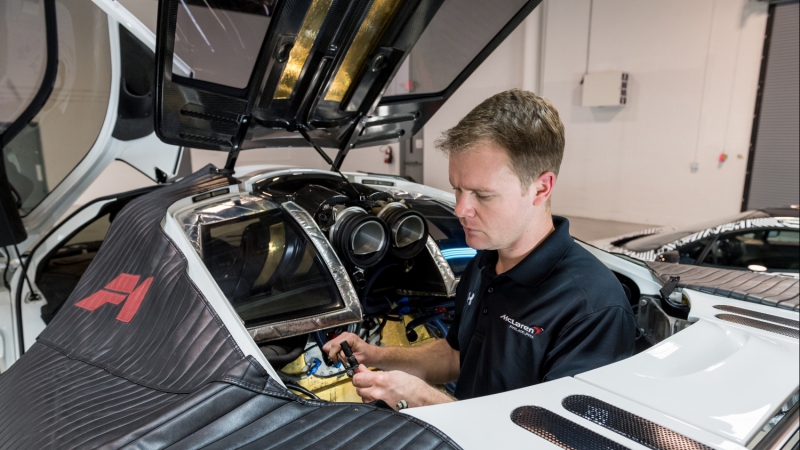Now there is a general rule when it comes to writing articles pertaining to supercars that one should usually leave out the nitty-gritty details of maintenance. After all, why waste your breath trying to get all worked up on the inner workings of a car whose customer base would willfully ignore and shove some money to make any problems go away.
Though essential, there is nothing remotely glamorous about car maintenance. At the end of the day, explaining such frivolities to the supercar audience is like telling them the grape pickers for their vintage champagne were treated nicely. Very droll. Pity, nobody will care for that anyway.
But being the incredible bore that I am, delving into supercar maintenance is something of which that I take great interest in, particularly when it comes to something as rare and as exclusive as the McLaren F1, which Road & Track had the pleasure of writing about recently, following the opening of the first F1 service centre in North America.
Oh yes the McLaren F1, every motoring scribe’s favourite source of trivia. From the wealth of literature written about it by now you should be able to recount all of its “fastest this” and “single-minded that” facts. It is an engineering masterpiece, and to me, the lengths to which qualified technicians would have to go to keep these cars in tip-top condition is of equal magnificence.

See, Gordon Murray, that brilliant moustachioed South African genius who designed the F1, was pretty single-minded in the way he designed it. This was a man who gave his engineering team two washer thickness for the bolts, and they had to justify the use of the thicker one. Weight and packaging was his primary concern, and that doesn’t make it easy when that time of the year comes around to make sure everything is working as it should be.
Don’t forget he is a race car engineer, one of the greatest in his field, so banal things like routine maintenance isn’t his concern and it sort of shows in the F1’s servicing requirements.
For starters, every year an F1 is required to undergo a full suspension inspection, which requires qualified technicians to take it on a full shakedown that comprises of a seven-page test procedure on a closed test track to assess its setup. Adding to that, every five years the engine has to be taken out to replace the lightweight fuel cell tank, and you can’t just bolt the engine back and call it a day, you have to recalibrate the entire suspension assembly, which also requires technicians to take it out for another full shakedown.

What’s more, technicians are equipped with a slab of granite with a certified flatness of 0.001mm to bed the flywheel replacement in. Screw your gold-leaf engine bay quip, this is my new favourite aspect of the McLaren F1, even if it isn’t in the car itself.
Oh, and that gold-leaf engine bay? It is said to degrade and is easily rubbed off if you so much as touch it.
The McLaren F1’s service requirements aren’t an isolated case, as other performance envelope-pushing supercars require extra care and attention such as the Bugatti Veyron’s need for a wheel replacement every 16,000km, or the 50,000km complete engine rebuild interval for the Mercedes-AMG Project One. Though I am happy to hear that the new Honda NSX, though often praised as a cut-price Porsche 918 with at least 80% of its ability, is relatively easy to keep fit and fixed.
Talking about this sounds like I’m drawing the clouds on your fantasy, like telling you that being of royal blood means that you are genetically sullied by all the inbreeding. The facts aren’t wrong, but it isn’t quite polite to be talking about it even though it is something that I find so fascinating – that of just how far cars are mechanically pushed to achieve their claimed performance figures, not the inbred royals.

Supercars, or the more sophisticated and fastest ones at least, are a bit like fighter jets, fast, extremely maneuverable, sitting right at the cutting edge of technology, and yet, rather ironically, it is so fragile you could almost knock it over if you were to so much as sneeze at it. That is the thing about being at the cutting edge, it is a tightrope walk between being at the pinnacle or tripping up and having the sharp end cut your nuts off.
We are in awe of the very same abilities of a supercar that makes it vulnerable, and it is a pity we find it rude to talk about it more often.

